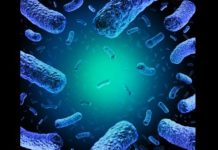
Aug. 31 (UPI) — The U.S. Food and Drug Administration issued an alert Thursday warning consumers to avoid eating food products with liquid nitrogen added at the point of purchase.
The FDA warned that products known by names such as “Dragon’s Breath,” “Heaven’s Breath” and “nitro puff,” which are prepared by adding liquid nitrogen just before consumption to create a “misty or smoke-like vapor,” can present health risks.
“Liquid nitrogen, although non-toxic, can cause severe damage to skin and internal organs if mishandled or accidently ingested due to the extremely low temperatures it can maintain,” the FDA said. “Inhaling the vapor released by a food or drink prepared by adding liquid nitrogen immediately before consumption may also cause breathing difficulty, especially among individuals with asthma.”
Additionally, the FDA said it was aware of “severe — and in some cases, life-threatening — injuries” including damage to the skin and internal organs due to liquid nitrogen still present in the food, as well as difficulty breathing after inhaling the vapor released by the liquid nitrogen.
“Injuries have occurred from handling or eating products prepared by adding liquid nitrogen immediately before consumption, even after the liquid nitrogen has fully evaporated due to the extremely low temperature of the food,” the agency said.
Products include colorful cereal or cheese puffs, and alcoholic and non-alcoholic drinks prepared with liquid nitrogen to create a mist.
Such products can be found in malls, food courts, kiosks, state or local fairs, and other locations, the FDA said.
While these products can be harmful, the FDA added that other foods treated with liquid nitrogen prior to the point of sale and before consumption generally do not pose a significant risk of injury.
“Other foods … for example some frozen confections, are treated in such a way that results in the complete evaporation of liquid nitrogen before reaching the consumer and are no longer at an extremely low temperature,” the FDA said.





